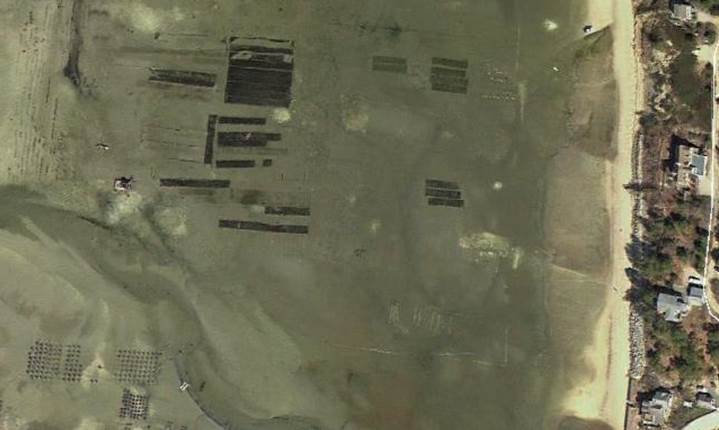Mitigating the Impact of Ocean Acidification via Combined Shellfish-Algae Aquaculture: Creating Coastal Ocean Acidification Refuges while Bioextracting Excess Nutrients
Shellfish aquaculture is a “non-feed” process, as shellfish are filter-feeders that sieve food from the coastal waters they grow in. Not only do shellfish require no additional inputs of nutrients or food, they also remove nutrients and carbon from coastal ecosystems, many of which suffer from anthropogenic nutrient inputs. A major environmental concern in many seaside communities is eutrophication, a process in which excess nutrients enter coastal waters and cause rapid plant (algae and plankton) growth that can lead to low oxygen conditions, and throw off natural ecosystem balance in ways that harm fish and shellfish stocks. Shellfish farming can help to mitigate this problem by (1) sequestering nutrients in shellfish tissue that is removed from the ecosystem when the shellfish are harvested; and (2) decreasing carbon dioxide and thus acidity of the water. The benefits of bioextraction have led to shellfish aquaculture being used increasingly to remove nutrients from eutrophic ecosystems. For example, shellfish aquaculture covering just 1% of the bottom of an estuary can remove up to 15% of the nitrogen in the water.

photo by Matt Long
This project will examine the linkages between calcifying species (clams) and photosynthetic organisms (algae) to determine how these organisms will influence and be influenced by ocean acidification. We hypothesize that algal “fouling” on clam nets actually creates favorable conditions for clam calcification and growth, thereby creating the potential for a local refuge from acidic waters. Photosynthesis removes carbon dioxide from the water, which creates favorable carbonate chemistry (a higher pH; thus, a less acidic environment), that likely enhances the ability of clams to produce their calcium carbonate shells. The facilitation of calcification has the potential to both increase the yield of clam aquaculture, and, more importantly, reduce the effects of ocean acidification that are projected to have large, negative implications for shellfish.

taken from Google Earth
Funding Agencies
The Education Foundation of America funded this research.